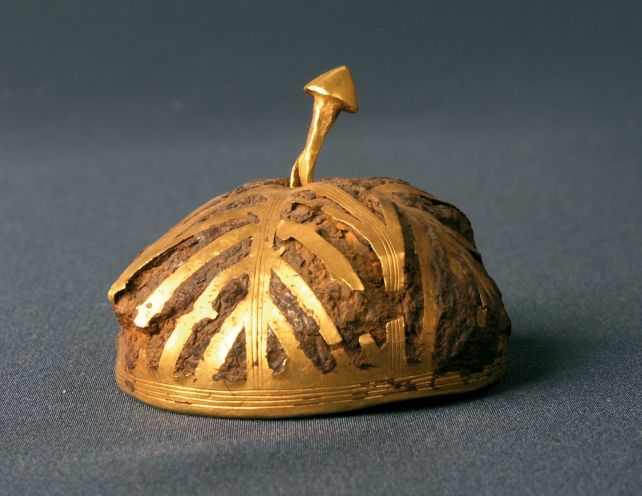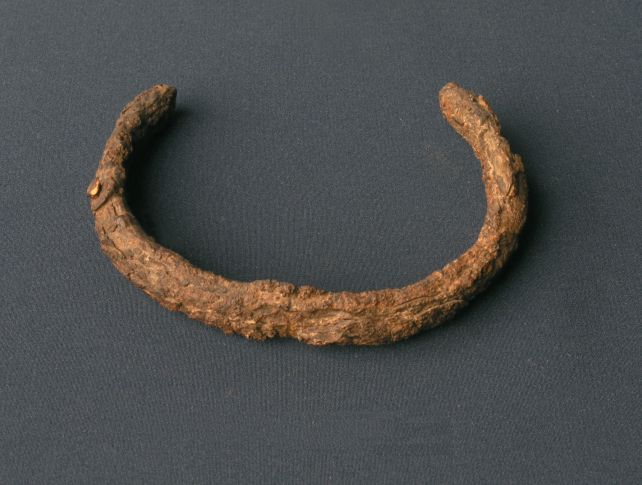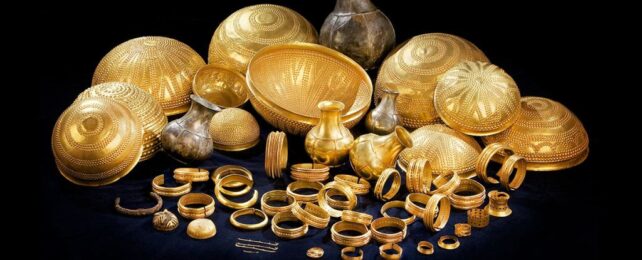Amidst a cache of glittering golden treasures from the Iberian Bronze Age, a pair of corroded objects might be the most precious of all.
A dull bracelet and a rusted hollow hemisphere decorated with gold are forged, researchers have found, not out of metal from beneath the ground, but with iron from meteorites that fell from the sky.
The discovery, led by now-retired head of conservation at the National Archeological Museum Spain, Salvador Rovira-Llorens, suggests that metalworking technology and techniques were far more advanced than we thought in Iberia more than 3,000 years ago.
The Treasure of Villena, as the cache of 66 mostly gold objects is known, was discovered more than 60 years ago in 1963 in what is now Alicante in Spain, and has since come to be regarded as one of the most important examples of Bronze Age goldsmithing in the Iberian Peninsula, and the whole of Europe.

However, determining the age of the collection has been somewhat difficult to do, thanks to two objects: a small, hollow hemisphere, thought to be part of a scepter or sword hilt; and a single, torc-like bracelet. Both have what archaeologists have described as a "ferrous" appearance – that is, they seem to be made of iron.
In the Iberian Peninsula, the Iron Age – where smelted terrestrial iron began to replace bronze – didn't start until around 850 BCE. The problem is that the gold materials have been dated to between 1500 and 1200 BCE. So working out where the ferrous-looking artifacts sit in the context of the Treasure of Villena has been something of a puzzle.
But iron ore from Earth's crust is not the only place source of malleable iron. There's a number of pre-Iron Age iron artifacts around the world that were forged from the stuff of meteorites. Perhaps most famous is the meteoritic iron dagger of Pharaoh Tutankhamun, but there are other Bronze Age weapons made of the material, and they were very highly prized.
There is a way to tell the difference: iron from meteorites has a much higher nickel content than iron dug out of Earth's ground. So researchers obtained permission from the Municipal Archaeological Museum of Villena, which houses the collection, to carefully test the two artifacts, and determine just how much nickel they contained.

They carefully took samples of both artifacts, and subjected the material to mass spectrometry to determine their composition. In spite of the high degree of corrosion, which alters the elemental makeup of the artifact, the results strongly suggest that both the hemisphere and the bracelet were made from meteoritic iron.
This neatly solves the dilemma of how the two artifacts align with the rest of the collection: they were made around the same period, dating back to around 1400 to 1200 BCE.
"The available data suggest that the cap and bracelet from the Treasure of Villena would currently be the first two pieces attributable to meteoritic iron in the Iberian Peninsula," the researchers write in their paper, "which is compatible with a Late Bronze chronology, prior to the beginning of the widespread production of terrestrial iron."
Now, because the objects are so badly corroded, the results aren't conclusive. But there are more recent, non-invasive techniques that could be applied to the objects to obtain a more detailed set of data that would help cement the findings, the team says.
The findings have been published in Trabajos de Prehistoria.
